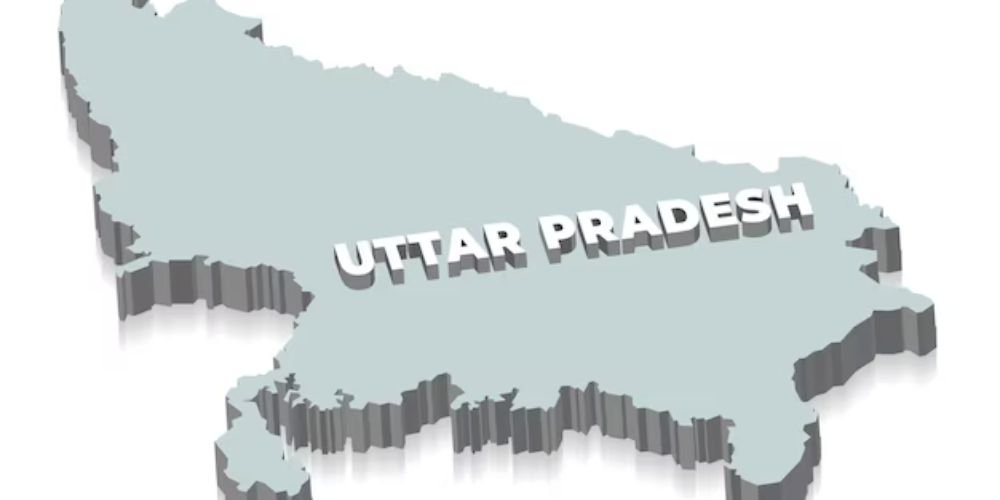Uttar Pradesh: A Journey Through Its Rich History and Cultural Heritage
Introduction: Uttar Pradesh, often referred to as the heartland of India, is a state steeped in history and culture. Situated in the northern part of the country, Uttar Pradesh has been witness to the rise and fall of ancient civilizations, the ebb and flow of empires, and the birth of religions and philosophies. Let us embark on a journey through the fascinating history of Uttar Pradesh, tracing its evolution from ancient times to the present day.
Ancient Period: The history of Uttar Pradesh dates back to ancient times, with archaeological evidence indicating human habitation in the region as far back as the Stone Age. The fertile plains of the Ganges River valley, which traverses the state, provided an ideal environment for the development of early civilizations.
One of the most significant ancient civilizations to emerge in Uttar Pradesh was the Indus Valley Civilization, which flourished around 3300–1300 BCE. Excavations at sites such as Harappa and Mohenjo-Daro in present-day Pakistan have revealed the advanced urban planning, sophisticated drainage systems, and intricate pottery of this ancient civilization.
Uttar Pradesh was also home to several prominent kingdoms and empires during antiquity, including the Maurya Empire, which was founded by Chandragupta Maurya in the 4th century BCE. Under the rule of Emperor Ashoka, who embraced Buddhism and spread its teachings throughout the region, the Maurya Empire reached its zenith, encompassing much of present-day India.
Medieval Period: The medieval period in Uttar Pradesh was characterized by the rise and fall of several powerful dynasties and empires. One of the most notable of these was the Gupta Empire, which ruled over much of northern India from the 4th to the 6th century CE. The Gupta period is often referred to as the “Golden Age” of Indian history, marked by significant advancements in art, literature, science, and philosophy.
In the 11th century, the region came under the rule of the Delhi Sultanate, marking the beginning of Muslim rule in northern India. The Sultanate established its capital in Delhi and exerted control over Uttar Pradesh through a series of provincial governors.
The Mughal Empire, founded by Babur in 1526, further solidified Muslim rule in Uttar Pradesh. Under the Mughals, the region experienced a flourishing of art, architecture, and culture, with notable monuments such as the Taj Mahal in Agra and the Bara Imambara in Lucknow.
Modern Period: The arrival of European traders and the establishment of colonial rule in India had a profound impact on Uttar Pradesh. The region became a key battleground during the struggle for supremacy between European powers, particularly the British East India Company and the French East India Company.
In 1857, Uttar Pradesh was the epicenter of the Indian Rebellion, also known as the Sepoy Mutiny, against British rule. The rebellion, which began in the town of Meerut and quickly spread across northern India, marked a significant turning point in the history of the region and the country as a whole.
Following the suppression of the rebellion, Uttar Pradesh became a crucial center of the Indian independence movement. Leaders such as Mahatma Gandhi, Jawaharlal Nehru, and Subhas Chandra Bose, among others, rallied support for the cause of freedom from British colonial rule.
Post-Independence: Uttar Pradesh played a pivotal role in the struggle for independence and was subsequently reorganized into its present form after India gained independence in 1947. The state has since emerged as a vibrant center of culture, politics, and commerce, with a rich tapestry of languages, traditions, and religions.
Today, Uttar Pradesh remains one of the most populous and culturally diverse states in India. Its capital, Lucknow, is renowned for its exquisite cuisine, elegant architecture, and rich literary heritage. Other notable cities in the state include Agra, home to the iconic Taj Mahal, and Varanasi, one of the oldest continuously inhabited cities in the world and a sacred pilgrimage site for Hindus.
Conclusion: Uttar Pradesh is a land of contrasts, where ancient traditions coexist with modern aspirations. Its history is a testament to the resilience and diversity of the people who have inhabited the region for millennia. As Uttar Pradesh continues to evolve and shape the destiny of India, may its rich heritage serve as a source of inspiration and pride for generations to come.
- GlucoRelief on Exploring Uttar Pradesh: A Dive into its Districts and List of Districts in Uttar Pradesh
- butik on Kylie Jenner Reveals Why She Dislikes Bella Hadid…
- Google Ads Agency Account on Kylie Jenner Reveals Why She Dislikes Bella Hadid…
- A2 Hosting VPS Hosting $2.99 a month on Kylie Jenner Reveals Why She Dislikes Bella Hadid…
- deniel on The Beginner’s Guide to Link Building and SEO
- Agriculture
- Article Submission Sites List
- Automotive
- Business
- Career
- Dating
- Digital Marketing
- Education
- Entertainment
- Environmental Issues
- Fashion
- Food
- Food & Cooking
- Global Updates
- Health
- Health and Wellness
- History
- Lifestyle
- Marketing
- Outdoor Activities
- Professional Development
- Religious
- Restaurant Marketing
- Science
- Social Media
- Spirituality
- Sports
- Technology
- Travel
- Uncategorized

